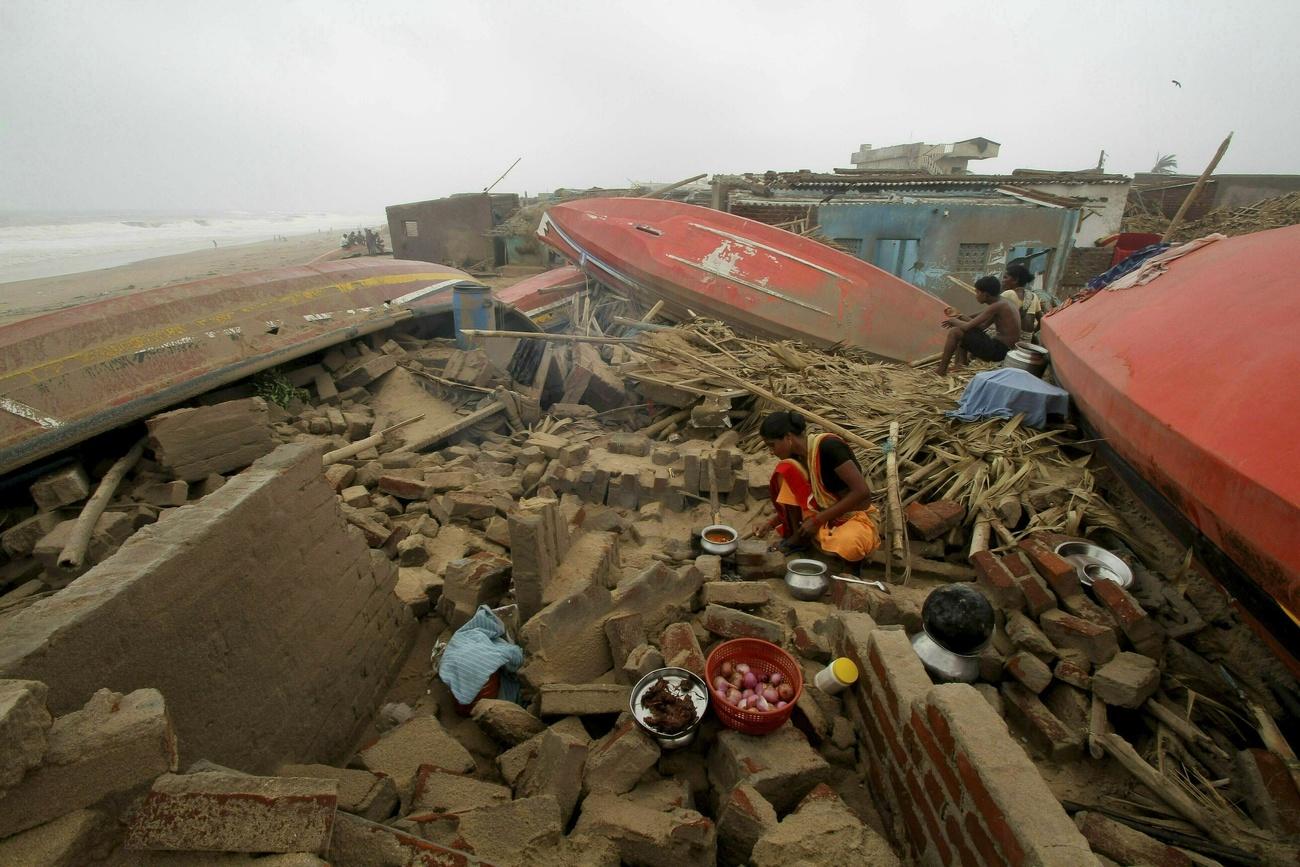Swiss official urges nations to invest more in disaster risk reduction

Too little is spent to protect communities around the world against the rising risks of drought, floods and other threats, warns a top Swiss official.
Speaking at the opening of the Global Platform for Disaster Risk Reduction meetingExternal link in Geneva, Manuel Sager,External link director general of the Swiss Agency for Development and Cooperation (SDC)External link, urged officials from 150 countries and experts from the private and public sectors to invest more in disaster prevention and preparedness.
“Funding to prevent disasters is much more cost-effective than dealing with the consequences of disasters,” he said on Wednesday. “Each dollar invested in risk reduction prevents the loss of $4 dollars.”
The United Nations estimates that about $5.2 billion (CHF5.25 billion) was spent on reducing disaster risk between 2005 and 2017, representing 3.8% of total humanitarian spending. Switzerland invests around CHF50 million a year in disaster prevention activities abroad, mainly in Latin America and Asia.
‘New, emerging, larger threats’
To coincide with the start of the three-day conference, hosted by Switzerland, the United Nations Office for Disaster Risk Reduction (UNDRR)External link released a biennial disaster assessment reportExternal link warning of the “new, emerging, and much larger threats” to human life and property, including air pollution, diseases, earthquakes, drought and climate change.
The study highlighted the growing potential for one disaster to produce or exacerbate another, as heavy rains trigger landslides and mudslides following wildfires or periods of long drought.
The UN estimates that disasters have displaced nearly 25 million people per year over the past decade – about 50,000 per day.
Extreme weather events have doubled over the past 20 years, causing economic losses that are making it “an uphill battle” to maintain development gains in low- and middle-income countries, Mami Mizutori, special representative of the UN secretary-general for disaster risk reduction, said in a statementExternal link.
‘Insufficient’ progress
Examining the seven targets set out in the Sendai Framework for Disaster Risk ReductionExternal link, adopted by UN member states in 2015, Mizutori said progress had been “regular” but “insufficient”. For example, less than half of states have put in place a national strategy for disaster risk reduction – a target to be met by 2020.
The UNDRR assessment report called for improvements in data collection, evaluation and response. The authors warned that failure by governments to adopt appropriate strategies to manage risk or threats could slow or reverse progress towards the UN Sustainable Development Goals.External link
The results of this week’s meeting in Geneva are set to feed into the High-level Political Forum on Sustainable DevelopmentExternal link in New York in July and the UN Climate Action Summit 2019External link, also in New York, in September.

In compliance with the JTI standards
More: SWI swissinfo.ch certified by the Journalism Trust Initiative
You can find an overview of ongoing debates with our journalists here. Please join us!
If you want to start a conversation about a topic raised in this article or want to report factual errors, email us at english@swissinfo.ch.